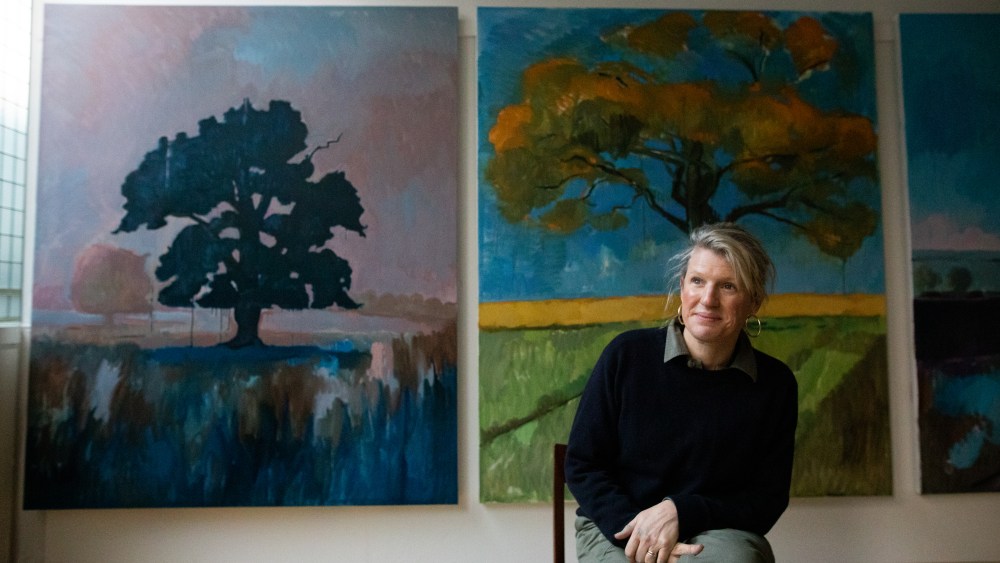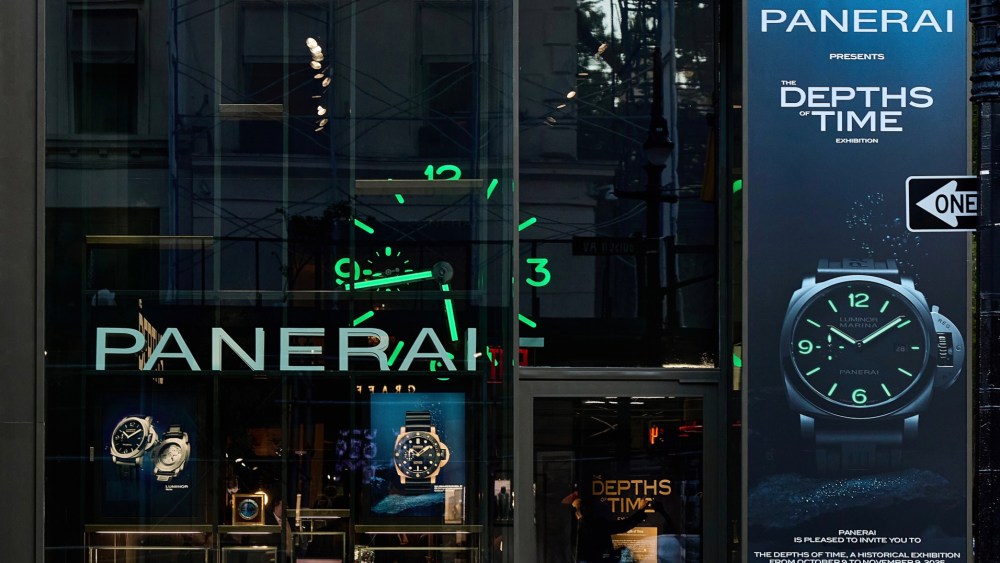
LONDON — Here in England, they’re paving paradise not to put up a parking lot, but to lay the tracks and build the stations for HS2, a high-speed railway that will cut north-south between the county of Staffordshire and London, with a branch to Birmingham.
The lyrics of Joni Mitchell’s 1970 song “Big Yellow Taxi” could not be more relevant to what’s been going on since 2019. Homes and green spaces have been swallowed up by the HS2 building work, and trees — some of them hundreds of years old — have been felled.
The British-American painter Nancy Cadogan, who has a home near the HS2 route, between Oxfordshire and Northamptonshire, has channeled nostalgia — her own, and that of friends, neighbors, and members of the public — for the felled trees into a new exhibition at the Garden Museum in London.
Called “The Lost Trees,” the show features 15 paintings of trees — some well-known, others well-loved — that have disappeared due to HS2 and for a variety of other reasons, some of them senseless and cruel.

The senlac yew, which was supposed to have been more than 1,000 years old before it was felled, inexplicably, by a farmer in 2023.
Those trees include the senlac yew near Battle, in East Sussex, which is said to have predated the Battle of Hastings in 1066, and was cut down by a farmer in 2023; the black pine in Oxford Botanic Gardens, beloved of J.R.R. Tolkien, which was felled in 2014 because its falling branches had become a danger to the public, and an old oak tree on the farm of one of Cadogan’s friends, which was in the path of HS2.
“In the felling, you feel very helpless, and we collectively feel this change in our landscape,” said Cadogan during a walk-through of the show, which runs until July 20. In the hardcover catalogue, which features essays on trees by contributors including the historian and bestselling author Katherine Rundell, Cadogan writes about having to fell a “mighty tree” in her own garden, and how she found the process upsetting.
“We have a private relationship with trees. They are beacons of time, we mark our lives by them, and we tell our private stories to them. They’re like a confessional box. We go to them to put things into perspective, and to find space, and they take on this beneficent presence,” added the enthusiastic Cadogan, who was wearing a baby pink chore jacket and big scarf twirled around her neck.

A wild pear tree in Warwickshire, crowned English Tree of the Year in 2015, was felled five years later to make way for the HS2 high speed train.
The London-based Cadogan specializes in portraits and landscapes and has exhibited internationally, with shows in places including New York, Rome, Oslo and Miami.
In 2020, she had her first institutional exhibition, “Gusto,” at the Keats-Shelley House Museum in Rome to mark the bicentennial of John Keats’ death. In 2022, she was selected as the artist in residence at the official home of the British ambassador to France.
Her tree memorial project began in 2022 after she painted the felled one on her friend’s farm and posted it shortly afterward on social media. She spent the following months talking to others about their tree tragedies, and trawling the internet for images of trees that had disappeared, for whatever reason.

The Sycamore Gap tree, a landmark near Hadrian’s Wall, was felled in 2023 by two men in an act of “mindless thuggery.”
As she was amassing her body of work, another great tree felling made headlines — and she painted that one, too.
Known as the Sycamore Gap tree, it was located by Hadrian’s Wall in the north of England. Over the past century it had become a local landmark, a tourist attraction and the subject of many photo shoots.
It was cut down in 2023 by two men in their 30s for no other reason than “mindless thuggery,” according to prosecutors. The two were found guilty of criminal damage earlier this year, and will be sentenced next week.
Cadogan’s paintings range from the colorful and upbeat to the dark and spindly, reflecting the range of emotions the felled trees evoke. She painted some of them from a wheelchair following a skiing accident that left her unable to stand up or walk for six weeks.

The Holy Thorn in Glastonbury, beloved of King Charles I, was damaged by vandals in 2010 and later destroyed by the owner of the land.
Cadogan’s time in a wheelchair focused her mind and forced her to work differently. She worked from a lowered canvas, and her lack of mobility left her unable to “clean up” the edges of the paintings, which she usually likes to do. She described the works on display as “looser, trippier, messier — and straight from the heart.”
Emma House, curator of the Garden Museum, which is located in a deconsecrated church next to Lambeth Palace, described Cadogan’s paintings as a “bold expression of a communal sense of mourning and loss. Her work reminds us that whilst we may feel the loss of trees deeply, we are all the richer for having experienced them.”
Cadogan said she sees this exhibition as a “chapter one” of her tree project. She’s hoping to do another show next year, based on more people’s stories of trees that have disappeared.
In addition to the tree paintings, the show has a giant map of the U.K. showing areas where trees have been felled, and stories about the lost trees from the communities affected by them.
Cadogan is also asking visitors to fill in cards telling stories about fallen trees that meant something to them, which she plans to add to the map.
Given that HS2 has already missed its target opening date of 2033, and the often dramatic life cycles of trees in the U.K., there may be many more chapters to come.
#Painter #Nancy #Cadogan #Breathes #Life #Felled #Trees #London #Show







